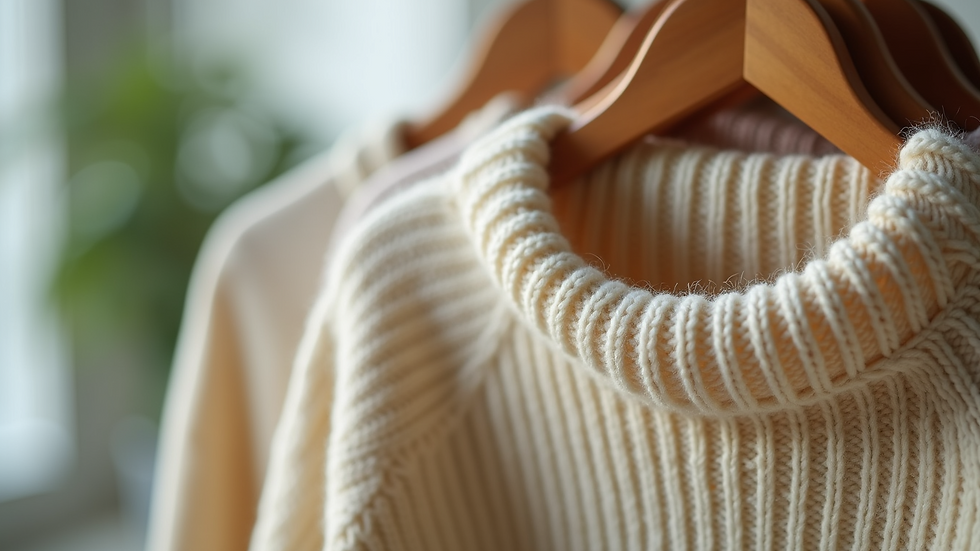Explore Textured Clothing: Minimalist Styles for Every Occasion
- jerre4570
- 4 days ago
- 3 min read
Textured clothing offers a unique way to add depth and interest to minimalist wardrobes without overwhelming simplicity. By focusing on fabric details, subtle patterns, and tactile elements, textured pieces bring life to outfits while maintaining clean, understated looks. This post explores how to incorporate textured clothing into minimalist styles for various occasions, helping you build a versatile and elegant wardrobe.

What Makes Textured Clothing Ideal for Minimalism
Minimalism in fashion emphasizes simplicity, clean lines, and a limited color palette. Textured clothing fits perfectly because it adds visual interest without relying on bold prints or bright colors. Instead, texture creates dimension through fabric choices like knits, linens, or subtly embossed materials.
Key reasons textured clothing works well with minimalist style:
Adds subtle detail without cluttering the look
Enhances tactile appeal, making outfits feel richer
Supports layering by mixing different textures for contrast
Keeps color palettes simple while avoiding flatness
For example, a plain white cotton shirt with a slight waffle weave looks more engaging than a smooth fabric, yet remains understated.
Types of Textures to Include in Your Wardrobe
Choosing the right textures is essential to maintain a minimalist aesthetic. Here are some popular textures that blend well with minimalist clothing:
Ribbed knits: Adds vertical lines and stretch, perfect for sweaters and tops
Waffle weave: Creates a grid-like pattern, ideal for casual shirts or loungewear
Linen: Natural texture with slight wrinkles, great for summer pieces
Bouclé: Soft, looped yarns that add a cozy feel to jackets or cardigans
Matte leather: Smooth but tactile, suitable for shoes or accessories
Corduroy: Fine ridges that add warmth and structure to pants or skirts
Mixing these textures in neutral tones like beige, gray, black, and white keeps outfits cohesive and elegant.
How to Style Textured Clothing for Casual Days
Textured clothing shines in casual settings by elevating simple outfits. Here are some styling tips:
Pair a ribbed knit sweater with straight-leg jeans for a relaxed yet polished look
Wear a waffle weave shirt with linen trousers for breathable comfort and subtle detail
Layer a bouclé cardigan over a plain tee to add softness and warmth
Use textured sneakers or loafers to complement a monochrome outfit
Example outfit: A cream ribbed sweater with light-wash jeans and white sneakers creates a cozy, approachable style that feels fresh without extra effort.
Incorporating Textured Pieces for Work and Smart Casual
Minimalist workwear benefits from texture by avoiding dullness while staying professional. Consider these ideas:
Choose a matte leather belt or shoes to add refinement without shine
Opt for a linen blend blazer with a smooth blouse underneath for contrast
Select a corduroy pencil skirt paired with a fine knit top for tactile interest
Use subtle textured scarves or bags as accessories to complete the look
Example: A gray linen blazer over a white silk blouse with black tailored pants balances texture and sleekness, suitable for many office environments.
Textured Clothing for Evening and Special Occasions
Evening wear can embrace texture to create understated elegance. Minimalist styles avoid excessive embellishments but use fabric details to stand out:
A velvet dress in a deep neutral tone offers richness without loud patterns
Satin or silk tops with a matte finish add shine and softness
Structured jackets with embossed or jacquard fabrics create subtle drama
Accessories like textured clutches or suede shoes enhance the outfit
Example: A black velvet midi dress paired with simple leather heels and a suede clutch makes a refined statement for dinners or events.
Tips for Mixing Textures Without Overdoing It
Balancing textures is key to maintaining minimalist style. Follow these guidelines:
Limit the number of textures per outfit to two or three
Stick to a consistent color palette to unify different fabrics
Combine smooth and rough textures for contrast, such as silk with wool
Avoid mixing too many patterns or shiny materials together
Use texture to highlight one area, like a textured jacket with plain pants
By thoughtfully layering textures, you create outfits that feel rich and intentional without clutter.
Caring for Textured Clothing
Textured fabrics often require special care to maintain their look and feel:
Follow washing instructions carefully, as some textures shrink or lose shape
Use gentle detergents and avoid harsh chemicals
Store items properly to prevent crushing or flattening textures
Consider professional cleaning for delicate fabrics like velvet or bouclé
Proper care ensures your textured pieces stay beautiful and wearable for a long time.
Textured clothing offers a fresh way to enhance minimalist wardrobes with depth and interest. By choosing the right fabrics and styling them thoughtfully, you can create versatile outfits for casual, work, and special occasions. Start exploring textured pieces today to add subtle richness to your everyday style.


Comments